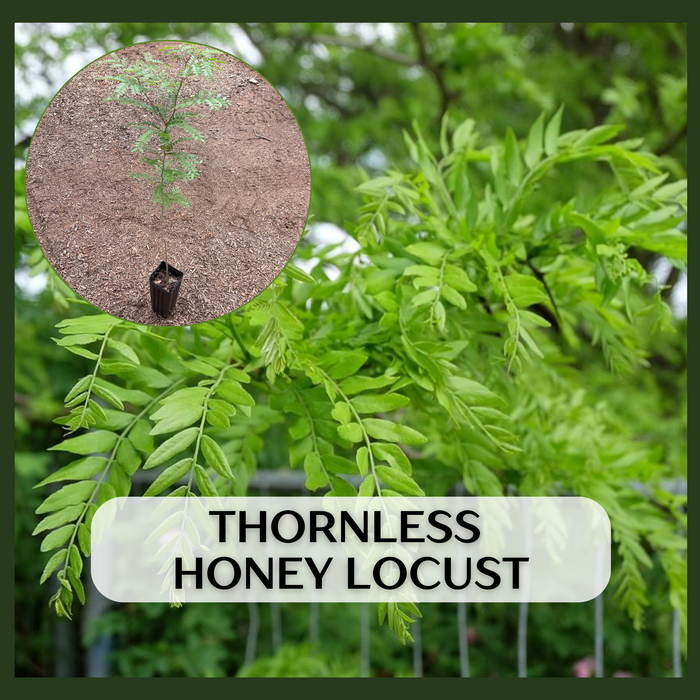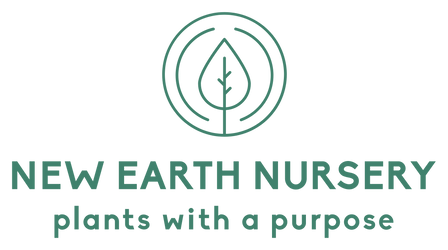
Thornless Honey Locust
🌿 Ships well rooted in a 3.5 x 9 inch deep tree pot. May arrive dormant and without leaves/foliage December through April.
The Thornless Honey Locust is a beautiful, fast-growing native tree prized for its fine, airy foliage, open canopy, and minimal maintenance. Unlike its wild cousin, this variety is naturally thorn-free, making it much safer for home landscapes and walkways.
Its light shade allows grasses and other plants to grow underneath, making it a favorite for pasture trees, silvopasture systems, and permaculture designs. In fall, its golden-yellow leaves drop early, acting as a natural mulch and breaking down quickly.
Latin Name: Gleditsia triacanthos var. inermis
Size at Maturity: 40–70 ft tall, 30–50 ft wide
USDA Zone: 4–9
Site & Soil: Tolerates a wide range of soils—including clay, sand, drought, salt, and compaction. Prefers full sun.
Pests & Diseases: Very hardy and adaptable; rarely troubled by serious pests
🌼 Uses:
Light, dappled shade—great for lawns, gardens, and understory planting
Thornless variety—safe for kids, pets, and paths
Fixes nitrogen indirectly by supporting soil biology (acts as a nurse tree)
Supports pollinators and wildlife with fragrant spring flowers and nutritious seed pods
Excellent for silvopasture, shade trees, urban plantings, or erosion control
🛠 Growing Tips:
Fast-growing—ideal for quick shade or soil restoration
Drops leaves and seed pods early in fall—use as mulch or forage
Plant in well-drained soil with sun exposure for best form
💡 Fun Fact:
Though not a nitrogen-fixer itself, Honey Locust supports soil life and mycorrhizal networks—helping improve fertility over time.





